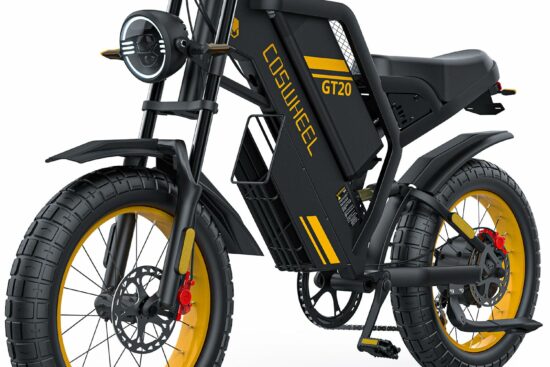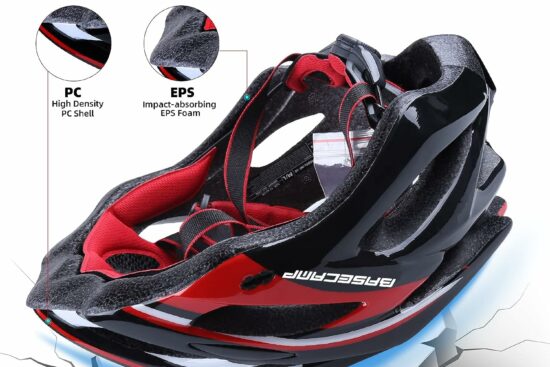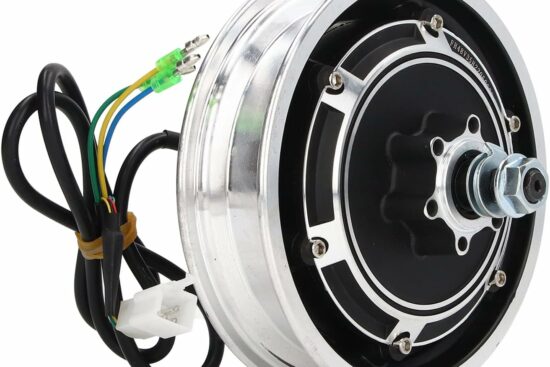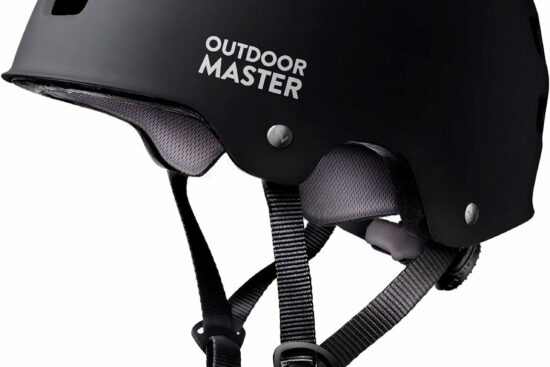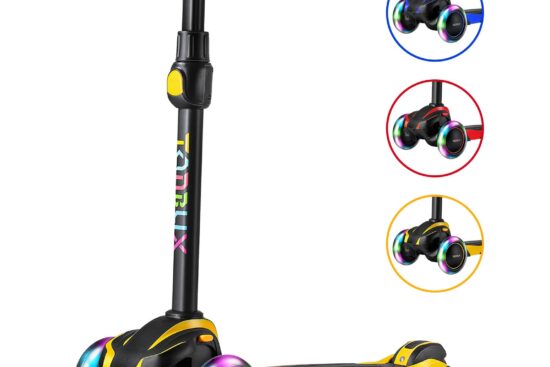
Hey there! Ever wondered if a 500W eBike can handle those steep hills? Well, you’ve come to the right place! We’re here to answer that burning question for you.
In our article, we’ll dive into the world of 500W eBikes and their capability to conquer those challenging inclines. We’ll explore the power-to-weight ratio, motor efficiency, and other factors that play a role in determining whether these electric bikes can handle steep hills. So, if you’re considering investing in a 500W eBike or simply curious about how they perform, stay tuned! You’ll find all the answers you’re looking for in our article.
Factors Affecting Hill Climbing Ability
When it comes to choosing an electric bicycle (eBike), one of the primary concerns for riders is its ability to climb steep hills. After all, what good is an eBike if it struggles to conquer challenging terrains? In this article, we will explore the various factors that can affect an eBike’s hill climbing ability and whether a 500W eBike can successfully tackle steep hills.
Weight of the eBike
The weight of the eBike plays a crucial role in determining its hill climbing performance. A heavier eBike can be more challenging to maneuver uphill and may require more power to overcome gravity. Several factors contribute to the overall weight of an eBike.
Frame material and design
The material and design of the eBike’s frame can significantly impact its weight. Aluminum frames are lightweight and sturdy, making them a popular choice among manufacturers. On the other hand, steel frames are more robust but tend to be heavier. Carbon fiber frames offer the advantage of being incredibly lightweight, but they come with a higher price tag.
Component weight
The weight of various components, such as the motor, battery, and drivetrain, also adds to the overall weight of the eBike. Opting for lighter components can help reduce the overall weight and improve hill climbing ability.
Accessories and cargo
If you frequently carry accessories or cargo on your eBike, it’s important to consider how they will affect its weight. Additional weight can make climbing hills more challenging, so it’s crucial to assess the impact of accessories and cargo on your eBike’s hill climbing performance.
Power-to-weight ratio
The power-to-weight ratio of an eBike is another significant factor that affects its ability to climb steep hills. Simply put, this ratio measures how much power the motor produces in relation to the overall weight of the eBike.
How it affects hill climbing
A higher power-to-weight ratio means that the eBike has more power available to overcome gravity when climbing hills. In contrast, a lower power-to-weight ratio may result in sluggish hill climbing performance.
Calculating power-to-weight ratio
To calculate the power-to-weight ratio, divide the motor’s wattage by the weight of the eBike, including the rider and any cargo. For example, a 500W eBike with a total weight of 20 kg would have a power-to-weight ratio of 25W per kilogram.
Ideal power-to-weight ratio for climbing hills
While there is no definitive ideal power-to-weight ratio, a higher ratio is generally desirable for climbing steep hills. However, it’s essential to strike a balance between power and weight, as excessively high power-to-weight ratios may compromise other aspects of the eBike’s performance or safety.
Motor type and power
The type and power of the eBike’s motor have a substantial impact on its hill climbing ability. Different types of motors and their power outputs can determine how effectively an eBike can tackle steep inclines.
Different types of eBike motors
There are two main types of eBike motors: hub motors and mid-drive motors. Hub motors are located in the wheel hub and provide direct power to either the front or rear wheel. Mid-drive motors, as the name suggests, are mounted in the middle of the eBike frame, providing power to the drivetrain.
Brushed vs. brushless motors
Brushed motors have brushes that transfer electricity to the rotor, while brushless motors use electronic commutation. Brushless motors are generally more efficient, lighter, and require less maintenance. When it comes to climbing steep hills, brushless motors tend to perform better due to their higher torque output.
Motor power and assist levels
The power output of an eBike motor is measured in watts (W). Higher wattage motors generally offer more torque and assistance, making hill climbing easier. However, it’s important to note that higher motor power often results in greater energy consumption and potentially shorter battery life.
Battery capacity
The capacity of an eBike’s battery, measured in volts (V) and amp-hours (Ah), is another influential factor in hill climbing performance. Battery capacity determines how much energy is available for the motor to provide assistance.
Understanding battery capacity
Voltage (V) represents the electrical potential difference between the positive and negative terminals of the battery. Amp-hours (Ah) measure the amount of current the battery can deliver over a specific period.
Estimating range and hill climbing performance
Battery capacity directly affects an eBike’s range and hill climbing ability. The higher the capacity, the longer the range and the more power available for hill climbing. It’s important to consider the battery capacity when deciding on an eBike for tackling steep hills.
Tire grip and tread pattern
The grip and tread pattern of the eBike’s tires are crucial for maintaining traction while climbing hills. The right tire choice can make a significant difference in an eBike’s ability to conquer steep inclines.
Importance of tire grip while climbing hills
Tire grip directly affects the eBike’s ability to maintain traction on steep hills. A tire with insufficient grip may slip or lose traction, making the climb difficult or even dangerous. Opting for tires with excellent grip can enhance hill climbing performance.
Choosing the right tread pattern
The tread pattern also plays a vital role in an eBike’s ability to climb hills successfully. Tires with aggressive and larger knobs provide better grip and traction on loose or muddy terrain. Smooth or less aggressive tread patterns may suffice for paved or moderate inclines.
Rider’s weight
The weight of the rider is an often overlooked yet significant factor in an eBike’s hill climbing ability. A heavier rider requires more power to propel the eBike up steep hills.
Effect of rider’s weight on hill climbing
The rider’s weight affects the power-to-weight ratio and overall load on the eBike. Heavier riders may experience slower hill climbing speeds or require higher power output from the motor to conquer steep inclines.
Managing weight distribution
Proper weight distribution on the eBike can help optimize hill climbing performance. Distributing weight towards the rear of the eBike can help improve traction and stability, making it easier to climb hills.
Impact on overall eBike performance
It’s essential to consider the rider’s weight when evaluating an eBike’s overall performance. While a 500W eBike may have sufficient power, it’s crucial to ensure it can handle the rider’s weight along with any additional cargo.
Techniques for Climbing Steep Hills
Climbing steep hills on an eBike requires a combination of proper technique and effective use of the bike’s features. The following techniques can aid in conquering demanding inclines successfully:
Using proper gear ratios
Choosing the correct gear ratio is crucial when climbing steep hills. Lower gears provide more torque, enabling the motor to aid in climbing while maintaining a comfortable cadence.
Maintaining a steady cadence
Maintaining a steady cadence is essential for efficient hill climbing. Finding a rhythm that allows for consistent pedaling and smooth motor assistance can help conserve energy and optimize climbing performance.
Applying consistent pedal assist
Applying a steady and consistent amount of pedal assist can make hill climbing more manageable. Avoid sudden bursts of power that may cause the rear wheel to lose traction. Smooth and controlled pedal input, combined with appropriate motor assistance, is key.
Using body weight for balance
When climbing steep hills, using your body weight to maintain balance can be advantageous. Leaning forward slightly can help improve traction on the front wheel, while shifting weight backward can increase grip on the rear wheel.
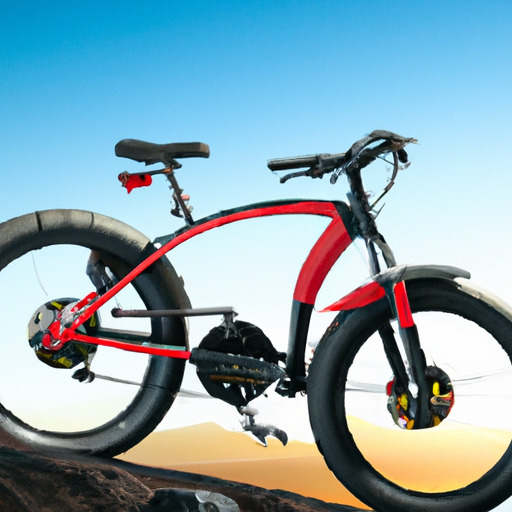
Challenges of Climbing Steep Hills
While eBikes offer significant advantages for hill climbing, there are a few challenges to consider when tackling steep inclines.
Increased motor and battery strain
Climbing steep hills can place greater strain on both the eBike’s motor and battery. The motor may need to work harder to provide sufficient torque, potentially resulting in increased heat generation. Similarly, the battery may drain faster when tackling demanding terrains.
Risk of overheating
When climbing steep hills for extended periods, the motor’s increased workload can lead to overheating. Overheated motors can experience reduced performance or even shut down temporarily to prevent damage. It’s important to monitor motor temperature and utilize appropriate cooling methods if available.
Potential loss of traction
Climbing steep hills poses a risk of losing traction, particularly when encountering slippery or loose surfaces. It’s crucial to choose tires with good grip, maintain appropriate pressure, and consider the terrain conditions to minimize the risk of traction loss.
Physical exertion for the rider
While eBikes provide pedal assistance, climbing steep hills can still require physical exertion from the rider. It’s important to gauge your own fitness level and consider whether you are comfortable with the level of physical effort required for climbing steep inclines.
Conclusion
Now, coming back to the central question: Can a 500W eBike climb steep hills? The answer is yes, a 500W eBike can climb steep hills, but its success will depend on several factors. The weight of the eBike, the power-to-weight ratio, the motor type and power, battery capacity, tire grip and tread pattern, and the rider’s weight all play a role in determining an eBike’s hill climbing ability.
To optimize hill climbing performance, it’s essential to choose an eBike with a suitable power-to-weight ratio, quality components, and a high-capacity battery. Consider the terrain you’ll be riding on and select tires that offer excellent grip. Lastly, utilizing proper climbing techniques and ensuring appropriate weight distribution can significantly enhance your eBike’s ability to conquer steep hills.
Remember, hill climbing is a combination of the eBike’s capabilities and your own skills as a rider. With the right eBike and technique, you’ll be conquering those steep hills with ease and enjoying the thrill of the ride.



















